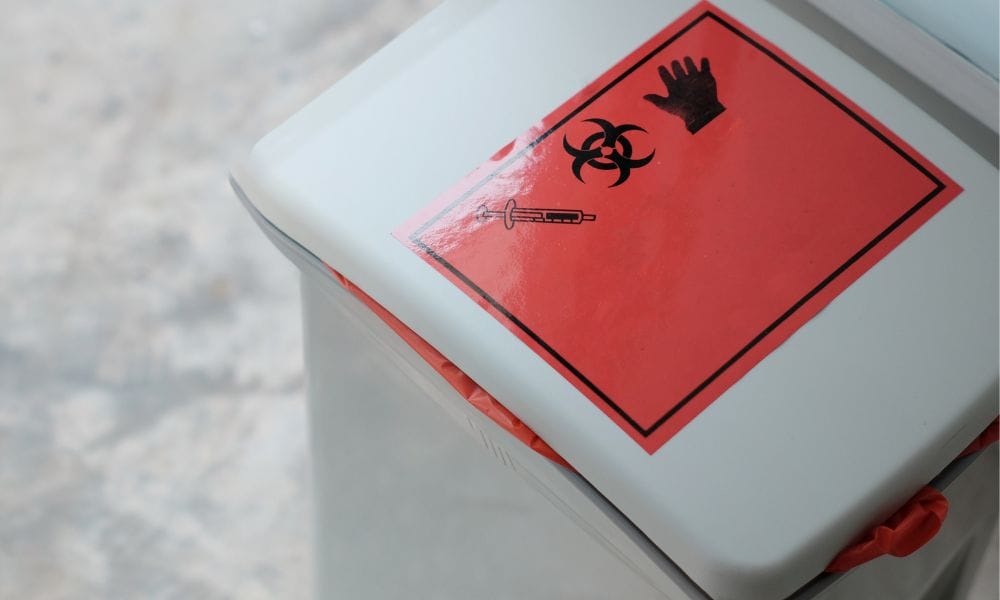Healthcare facilities must work to ensure the well-being and safety of both employees and patients. An important aspect of achieving this is understanding the proper handling of hazardous materials. Harmful materials are present in a range of settings, including hospitals, clinics, and laboratories. To maintain a safe environment for staff and patients, healthcare workers must be familiar with hazardous material handling tips for medical facilities.
Always Use Proper PPE
Using proper personal protective equipment (PPE) is the first line of defense in preventing exposure to hazardous substances. The appropriate PPE can safeguard healthcare workers from various dangers, such as chemical exposure, infectious materials, and physical hazards. To choose the correct PPE, it’s important to understand the potential risks associated with various tasks around your facility. For instance, gloves made of nitrile or latex may be suitable for handling chemicals, while a respirator and face shield could be necessary for tasks involving airborne particles or infectious agents.
Train Employees in Hazardous Material Handling
Training employees in handling hazardous materials is another crucial component of maintaining a safe healthcare environment. Conduct regular training sessions to familiarize staff with the proper handling and disposal guidelines for hazardous materials, such as chemicals, sharp objects, and biological waste.
Employees must know the potential risks associated with each type of material and strategies for managing accidental exposure or spills. Furthermore, healthcare facilities should establish clear protocols outlining the steps to take in an emergency involving hazardous materials.
Ensure Proper Labeling and Storage
Chemicals and solutions are some of the must-have materials for medical facilities, but certain chemicals can also be harmful without the proper care. Improperly labeled or stored substances can result in exposure to harmful chemicals, fires, or even explosions. To prevent such incidents, healthcare facilities should develop detailed guidelines for the proper storage and labeling of hazardous materials. These guidelines may include color-coding systems, the use of internationally recognized symbols, and utilizing designated areas to separate incompatible substances.
Never Eat or Drink Around Hazardous Materials
Finally, healthcare workers must take necessary precautions by avoiding eating or drinking around hazardous materials. Cross-contamination is a significant risk in medical facilities and can pose serious health consequences. Staff should only eat and drink in designated areas, and thorough handwashing is crucial before and after handling hazardous substances. Additionally, discourage employees from using personal devices, such as smartphones, while handling these materials to further limit the chance of contamination.
Implementing these hazardous material handling tips for medical facilities can significantly reduce the risks associated with hazardous substances and contribute to a safer and healthier work environment. By emphasizing the importance of using proper PPE, training employees on hazardous material handling, ensuring proper labeling and storage, and avoiding eating or drinking around hazardous substances, healthcare providers can promote safe practices that protect themselves, their staff, and their patients.







